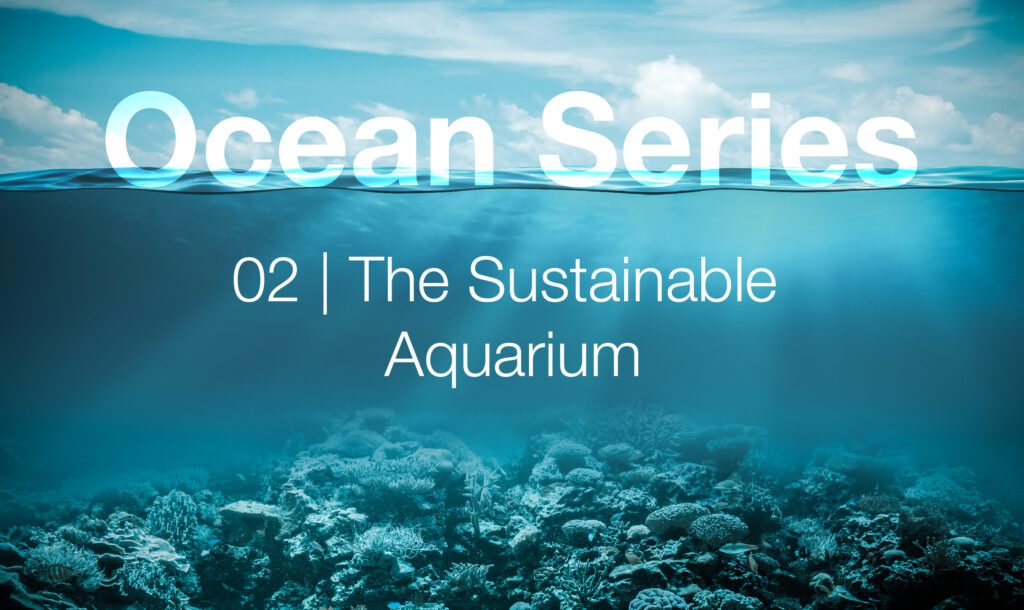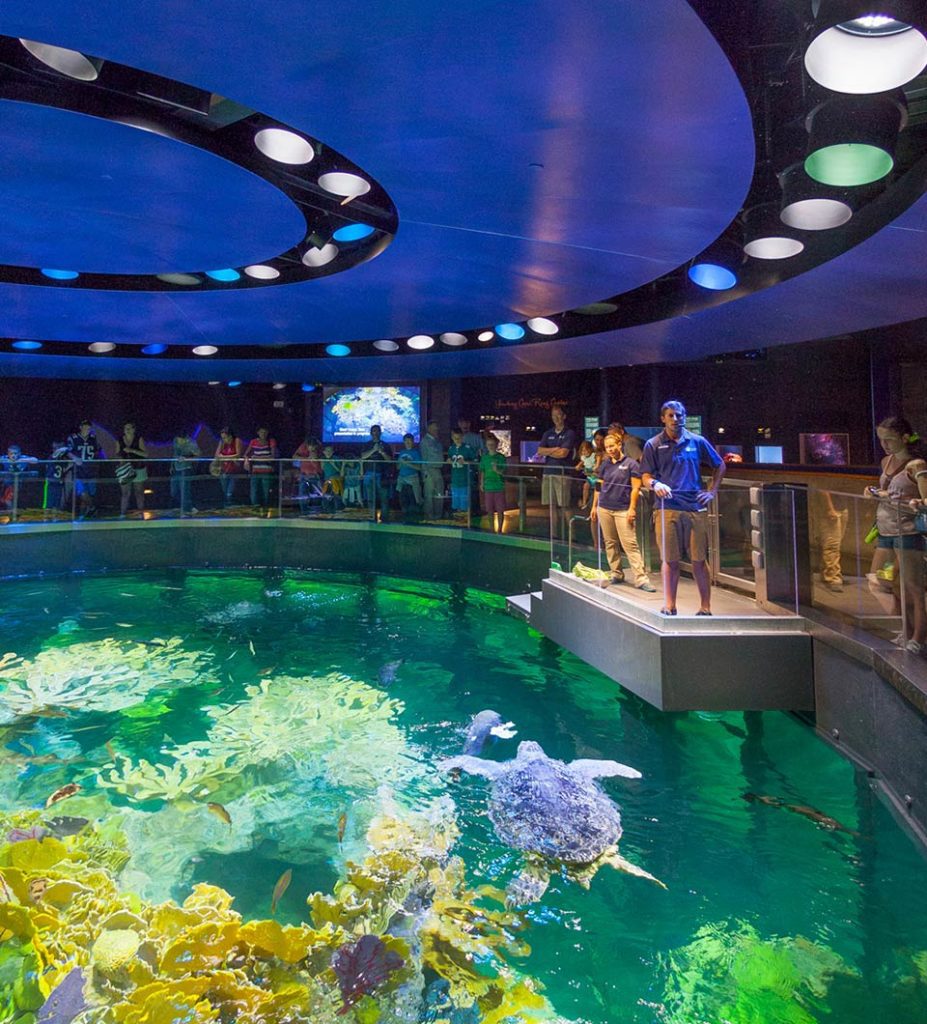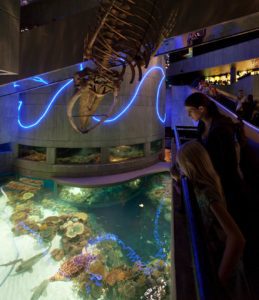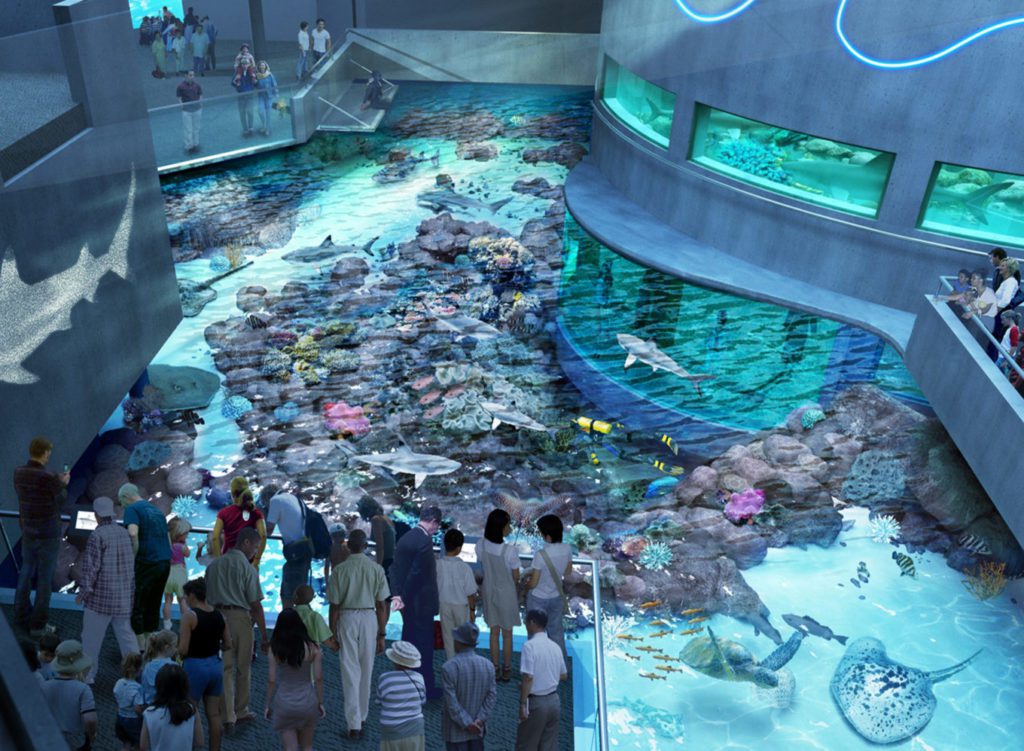Blue Architecture: Building Design for Our Oceans
The way that we build can have profound impact on our oceans and, in an era in which global warming is rapidly changing ecosystems, building responsibly is vital for our oceans.
View Post
CambridgeSeven conceptualized the 20th century aquarium by winning the 1962 design competition for Boston’s New England Aquarium. Our winning design changed how visitors experience the aquatic realm by transforming the visitor experience from passively gazing into a tank that was just another diorama in a neoclassical gallery into a journey through the ocean depths where the hidden aquatic world is revealed in an immersive environment. Our groundbreaking aquarium concept has remained the dominant approach to aquarium design for the ensuing 60 years. Today, we are expanding that immersive concept to help institutions tell more nuanced stories by making their conservation and sustainability actions the theme of their exhibits and vital components of their architecture. Let’s explore these practices and initiatives that are found in the modern Sustainable Aquarium, where less can yield more.

The most important aspect of the Sustainable Aquarium is designing and building facilities that reduce or eliminate carbon emissions by specifying electric-only building systems and equipment. Integrating Net Zero Energy strategies into concept design is fundamental as this will embed energy saving into the fabric of the facility. Net Zero concepts can generate massing, component detailing, and material specification that will meet new performance criteria. Exploring opportunities to reduce and limit embodied carbon in the construction of new facilities should be a high priority.
The term “sustainability” can have broad meaning; in the aquarium context, we mean:
An aquarium’s work on these four topics is of great interest to the public and could be transformative by educating visitors about climate change reversal, habitat preservation through mandated protection of ocean ecosystems, and work supporting animal life in the wild through legislation that protects certain species. Increasingly, we are working with clients to showcase these initiatives in hopes of encouraging the public to take action in their own lives.

In the U.S., current incentives are in place to hasten adoption of widespread electrification. One metric we use to measure this progress is Energy Usage Intensity (EUI). This index sets a baseline of accepted usage for building types. While the EUI for Sustainable Aquariums is in development, the importance of setting standards is not in doubt. Our goal should be to improve Aquarium EUI by a minimum of 30% by:
Reducing energy consumption and transitioning away from fossil fuel by introducing heat pumps to cool and heat water for both HVAC and LSS, will slow and then reverse global warming and habitat degradation. Demonstrating an aquarium’s role in this process is not only an ethical imperative, but also connects institutional action with visitor education.
A critical goal for the Sustainable Aquarium is the reduction in potable water usage as supplies are under threat from climate change. Reduction is dependent on updating Standard Operating Procedures (SOPs) around Life Support Systems (LSS) filter cleaning via more efficient back-washing techniques, denitrification that reduces the need for adding replacement water to close looped seawater systems and replacing inefficient and outdated equipment that leaks and loses water to evaporation.

Conservation of animals in wild habitats is critical. Past practices of taking aquatic life from their homes is no longer sustainable and will contribute to species extinction. In the Sustainable Aquarium, new husbandry techniques breed animals on site to protect species in the wild. They are also leading with the rescue and rehabilitation of injured wildlife and educating the public by exhibiting this formerly behind-the-scenes work. Advanced media technology can be deployed to showcase animals in the wild without disrupting ecosystems; increasingly, our clients are incorporating simulated ecosystems, such as virtual shark tanks, that immerse and delight visitors.
The 21st century zeitgeist to Reduce, Reuse, Recycle is an essential and achievable goal. Our task is to implement it in a manner that is not only institutionally prudent, but also transcendent – pushing beyond management practices by leading sustainability campaigns through eliminating fossil fuel usage and inspiring with proactive sustainable leadership. A 21st century aquarium visit will not be limited to seeing fantastic creatures in ocean settings but will also educate about action that is changing the world. The 20th century aquarium focused on suspending belief and creating an alternative aquatic reality. The 21st century aquarium will focus on our role in preserving the aquatic biosphere.
The way that we build can have profound impact on our oceans and, in an era in which global warming is rapidly changing ecosystems, building responsibly is vital for our oceans.
View PostOur in-house aquarium experts spent months collecting information about how aquariums can uphold their mission to conserve the natural environment through their own LSS and back-of-house systems.
View Post